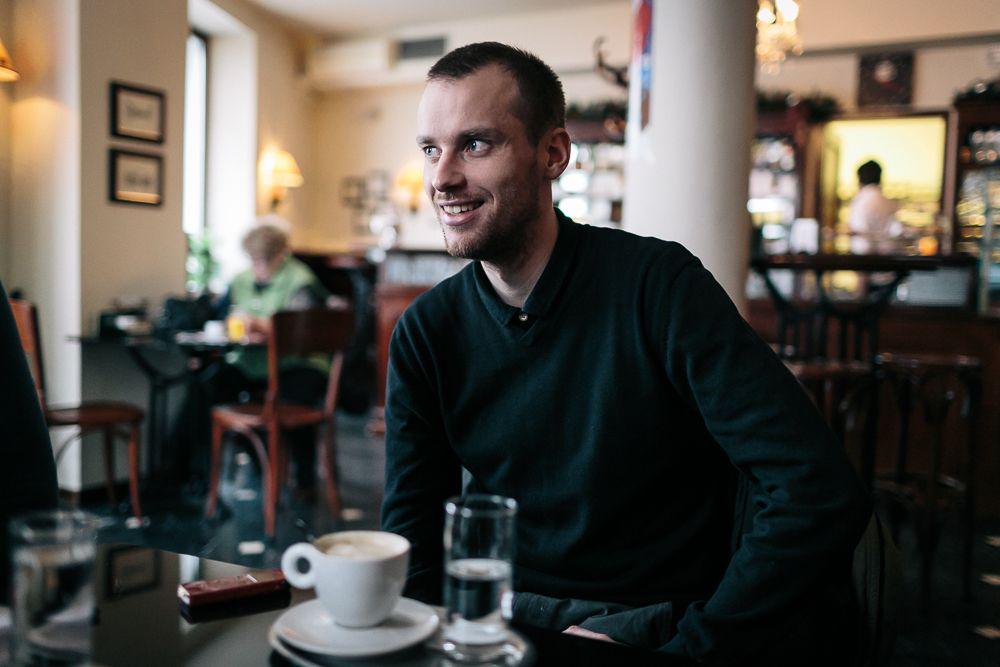
I learned that building something in a different cultural environment is completely different. The difference in culture turned out to be a much bigger factor than I expected at the beginning.

In February pupils are expected to move into a new school near the city of Kolkata, in India. The school was designed by a native of the Slovenian Koroška region, born in 1985. The project was part of his thesis. It was also his second project on another continent. Three years ago, together with 20 other students from the Faculty of Architecture in Ljubljana, under the mentorship of professor Vodopivec, he also took part in a project building a library and classroom in South Africa, for which they won the Plečnik prize.
As a student you took part in two successful prize-winning international projects. How did all that happen?
It was a matter of circumstances. We were the first students in South Africa that were non-German speaking students. Most of the students working there came from Austria and Germany. The idea behind these kinds of projects is that students from European faculties gain practical experience by cooperating with the locals. We literally physically built the school in question. In Slovenia that would be impossible – for students to physically build their own construction.
How much does building a school cost in India?
It's incomparably cheaper in India. All the construction work costs around 100 euros per square meter. Building a school in Slovenia costs five times the price. Building a single-family house in Slovenia costs around 600 euros per square meter, so building a school certainly costs much more. Apart from that the climate conditions there are more favourable. Temperatures never fall below 15C. There is no need for heat insulation and building regulations are not that demanding. So a lot of factors simplify the building process.
Intercultural differences surely influence work in different environments and on different continents. It is a whole new world, isn't it?
It was a challenge. I learned that building something in a different cultural environment is completely different. The difference in culture turned out to be a much bigger factor than I expected at the beginning. Communication is also different. You can't take Indians too seriously. If you agree on something and they confirm, it still doesn't mean that they're going to do it (laughs).
And when do you find that out?
If not sooner, when the construction is already built (laughs). We had many such examples; even cases when you come to a misunderstanding. Although English is one of the official languages, people don't understand it that well. When I would agree something with the builders, go over the plans and amend a few things, I would later find out that they failed to understand me, or didn't want to understand me. The number one problem in India is of course transport – the transport of people and material. The bricks were burnt and dried in the nearby village. Workers then transported the bricks on hand driven tricycles. The cement and concrete were brought to the warehouse by railway, and then again transported to the building site with tricycles. In India you have to take your time for everything – both to travel and to build.
And you also took time for this project. What has the experience taught you, what have you learned?
Patience! I also gained a new perspective on different cultures. At the beginning I maybe didn't take into account the fact, that cultural differences do influence architecture…
The project in Africa was led by Germans and Austrians. That certainly must have influenced the efficiency of the project?
Regarding Africa, the Germans didn't know about it any more than us… The organization which donated half the funds for the project came from Austria. The other half was donated by the Slovenian Ministry of Foreign Affairs. The school was built for EUR 30,000 which is a good price for 250 square meters. We financed the trip and our work ourselves or through donations. With regards to the Germans and Austrians – our school turned out better than theirs. We were better. Stereotypes tell us that Germans tend to be very precise. Being precise is sometimes an obstacle. You also have to know how to improvise and that's where we win.
I learned that building something in a different cultural environment is completely different. The difference in culture turned out to be a much bigger factor than I expected at the beginning.

































































